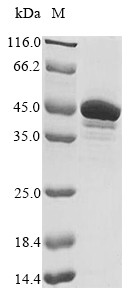Cookie preferences
This website uses cookies, which are necessary for the technical operation of the website and are always set. Other cookies, which increase the comfort when using this website, are used for direct advertising or to facilitate interaction with other websites and social networks, are only set with your consent.
Configuration
Technically required
These cookies are necessary for the basic functions of the shop.
"Allow all cookies" cookie
"Decline all cookies" cookie
CSRF token
Cookie preferences
Currency change
Customer-specific caching
FACT-Finder tracking
Individual prices
Selected shop
Session
Comfort functions
These cookies are used to make the shopping experience even more appealing, for example for the recognition of the visitor.
Note
Show the facebook fanpage in the right blod sidebar
Statistics & Tracking
Affiliate program
Conversion and usertracking via Google Tag Manager
Track device being used

NEW
If you have any questions, please use our Contact Form.
You can also order by e-mail: info@biomol.com
Larger quantity required? Request bulk
You can also order by e-mail: info@biomol.com
Larger quantity required? Request bulk
Organism: Homo sapiens (Human). Source: E.coli. Expression Region: 1-176aa. Protein Length:... more
Product information "Double-stranded RNA-specific adenosine deaminase (ADAR), partial, human, recombinant"
Organism: Homo sapiens (Human). Source: E.coli. Expression Region: 1-176aa. Protein Length: Partial. Tag Info: N-terminal GST-tagged. Target Protein Sequence: MNPRQGYSLS GYYTHPFQGY EHRQLRYQQP GPGSSPSSFL LKQIEFLKGQ LPEAPVIGKQ TPSLPPSLPG LRPRFPVLLA SSTRGRQVDI RGVPRGVHLR SQGLQRGFQH PSPRGRSLPQ RGVDCLSSHF QELSIYQDQE QRILKFLEEL GEGKATTAHD LSGKLGTPKK EINRVL. Purity: Greater than 85% as determined by SDS-PAGE. Endotoxin: Not test. Biological Activity: n/a. Form: Liquid or Lyophilized powder. Buffer: If the delivery form is liquid, the default storage buffer is Tris/PBS-based buffer, 5%-50% glycerol. If the delivery form is lyophilized powder, the buffer before lyophilization is Tris/PBS-based buffer, 6% Trehalose, pH 8.0. Reconstitution: We recommend that this vial be briefly centrifuged prior to opening to bring the contents to the bottom. Please reconstitute protein in deionized sterile water to a concentration of 0.1-1.0 mg/mL.We recommend to add 5-50% of glycerol (final concentration) and aliquot for long-term storage at -20 °C/-80 °C. Our default final concentration of glycerol is 50%. Customers could use it as reference. Storage: The shelf life is related to many factors, storage state, buffer ingredients, storage temperature and the stability of the protein itself. Generally, the shelf life of liquid form is 6 months at -20 °C/-80 °C. The shelf life of lyophilized form is 12 months at -20 °C/-80 °C. Notes: Repeated freezing and thawing is not recommended. Store working aliquots at 4 °C for up to one week. Relevance: Catalyzes the hydrolytic deamination of adenosine to inosine in double-stranded RNA referred to as A-to-I RNA editing. This may affect gene expression and function in a number of ways that include mRNA translation by changing codons and hence the amino acid sequence of proteins, pre-mRNA splicing by altering splice site recognition sequences, RNA stability by changing sequences involved in nuclease recognition, genetic stability in the case of RNA virus genomes by changing sequences during viral RNA replication, and RNA structure-dependent activities such as microRNA production or targeting or protein-RNA interactions. Can edit both viral and cellular RNAs and can edit RNAs at multiple sites or at specific sites. Its cellular RNA substrates include: bladder cancer-associated protein, neurotransmitter receptors for glutamate and serotonin and GABA receptor. Site-specific RNA editing of transcripts encoding these proteins results in amino acid substitutions which consequently alters their functional activities. Exhibits low-level editing at the GRIA2 Q/R site, but edits efficiently at the R/G site and HOTSPOT1. Its viral RNA substrates include: hepatitis C virus, vesicular stomatitis virus, measles virus, hepatitis delta virus, and human immunodeficiency virus type 1. Exhibits either a proviral or an antiviral effect and this can be editing-dependent, editing-independent or both. Impairs HCV replication via RNA editing at multiple sites. Enhances the replication of MV, VSV and HIV-1 through an editing-independent mechanism via suppression of EIF2AK2/PKR activation and function. Stimulates both the release and infectivity of HIV-1 viral particles by an editing-dependent mechanism where it associates with viral RNAs and edits adenosines in the 5'UTR and the Rev and Tat coding sequence. Can enhance viral replication of HDV via A-to-I editing at a site designated as amber/W, thereby changing an UAG amber stop codon to an UIG tryptophan codon that permits synthesis of the large delta antigen which has a key role in the assembly of viral particles. However, high levels of ADAR1 inhibit HDV replication. Reference: "Human RNA-specific adenosine deaminase ADAR1 transcripts possess alternative exon 1 structures that initiate from different promoters, one constitutively active and the other interferon inducible." George C.X., Samuel C.E. Proc. Natl. Acad. Sci. U.S.A. 96:4621-4626(1999). Function: nan
| Keywords: | ADAR, p136, DRADA, ADAR1, IFI-4, K88DSRBP, Interferon-inducible protein 4, 136 kDa double-stranded RNA-binding protein, Double-stranded RNA-specific adenosine deaminase, Recombinant Human Double-stranded RNA-specific adenosine deaminase (ADAR), partial |
| Supplier: | Cusabio |
| Supplier-Nr: | EP001324HUe0 |
Properties
| Application: | Activity not tested |
| Conjugate: | No |
| Host: | E.coli |
| Species reactivity: | human |
| MW: | 47.2 kD |
| Purity: | >85% (SDS-PAGE) |
Database Information
| KEGG ID : | K12968 | Matching products |
| UniProt ID : | P55265 | Matching products |
| Gene ID | GeneID 103 | Matching products |
Handling & Safety
| Storage: | -20°C |
| Shipping: | +4°C (International: +4°C) |
Caution
Our products are for laboratory research use only: Not for administration to humans!
Our products are for laboratory research use only: Not for administration to humans!
You will get a certificate here
Viewed


